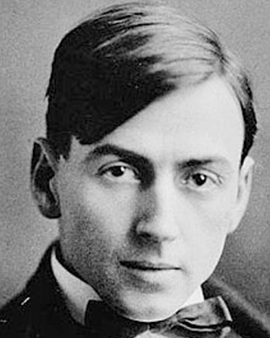Although Tom Thomson is considered one of Canada's most prominent painters today, his artistic talent was not evident from the start, as he came from a farming family and never enjoyed an extensive education. These humble beginnings did not prevent him from producing about 400 oil studies on wood and about fifty larger paintings during his career. Some of his works, such as "The West Wind" and "The Jack Pine," are now among the best known and most iconic paintings in Canadian art history. Almost all of Thomson's works depict Ontario landscapes, particularly trees, lakes and rivers.
Thomson was a loner who enjoyed spending time in nature. While fishing or hiking, he drew inspiration for his paintings. In doing so, he often followed idiosyncratic daily rhythms: He tended to rarely leave his Toronto cabin during daylight hours. But as soon as it was dark, he strapped his snowshoes to his feet, took long hikes through the countryside, and returned before dusk. Thomson was not always merciful with his own works. Sometimes he threw burning matches at his paintings, and once he is even said to have thrown a box of his drawings into the woods out of frustration. He often simply gave his works away when someone liked them. Thomson enjoyed touring the Canadian wilderness in his canoe, covering long distances and making portraits of the landscape along the way. As soon as he found a suitable subject, he didn't care about any adverse circumstances: when he was making the first draft of his famous painting "The Jack Pine," the tree he was portraying fell after a while and almost fell on him. But Thomson was not deterred and after a brief moment of shock, eagerly continued to paint his masterpiece.
Thomson came to his death by drowning at the age of 39 when he had been out alone in his canoe on Canoe Lake. The upside-down floating canoe was discovered the same day he disappeared. His body, on the other hand, was not found in the lake until eight days later. There are numerous legends and speculations about the circumstances of his death. Again and again it has been claimed that he was murdered or committed suicide. However, there is no evidence for these theories and therefore we have to assume that Tom Thomson's death was simply a tragic accident in the end. Shortly after his death, the so-called "Group of Seven" was formed, consisting of seven Canadian landscape painters. Thomson's life's work exerted a great influence on this group, which is why he is often considered an unofficial member.
×





.jpg)
.jpg)
.jpg)
.jpg)
.jpg)
.jpg)
.jpg)
.jpg)
.jpg)
.jpg)
.jpg)
.jpg)
.jpg)
.jpg)
.jpg)
.jpg)
.jpg)
.jpg)
.jpg)
.jpg)
.jpg)
.jpg)
.jpg)
.jpg)
.jpg)
.jpg)
.jpg)
.jpg)
.jpg)
.jpg)
.jpg)
.jpg)
.jpg)
.jpg)
.jpg)
.jpg)
_-_(MeisterDrucke-635751).jpg)
_-_(MeisterDrucke-635751).jpg)
.jpg)
.jpg)
 - (MeisterDrucke-151499).jpg)
 - (MeisterDrucke-151499).jpg)
.jpg)
.jpg)
_-_(MeisterDrucke-635752).jpg)
_-_(MeisterDrucke-635752).jpg)
_-_(MeisterDrucke-696120).jpg)
_-_(MeisterDrucke-696120).jpg)
.jpg)
.jpg)
.jpg)
.jpg)
.jpg)
.jpg)
_-_(MeisterDrucke-635755).jpg)
_-_(MeisterDrucke-635755).jpg)
.jpg)
.jpg)
_-_(MeisterDrucke-635750).jpg)
_-_(MeisterDrucke-635750).jpg)
.jpg)
.jpg)
_-_(MeisterDrucke-635753).jpg)
_-_(MeisterDrucke-635753).jpg)
.jpg)
.jpg)
.jpg)
.jpg)
.jpg)
.jpg)
 - (MeisterDrucke-635760).jpg)
 - (MeisterDrucke-635760).jpg)
.jpg)
.jpg)
.jpg)
.jpg)
.jpg)
.jpg)
.jpg)
.jpg)
.jpg)
.jpg)
.jpg)
.jpg)
_on_wood)_-_(MeisterDrucke-635759).jpg)
_on_wood)_-_(MeisterDrucke-635759).jpg)
.jpg)
.jpg)
.jpg)
.jpg)
.jpg)
.jpg)
 - (MeisterDrucke-635761).jpg)
 - (MeisterDrucke-635761).jpg)
.jpg)
.jpg)






